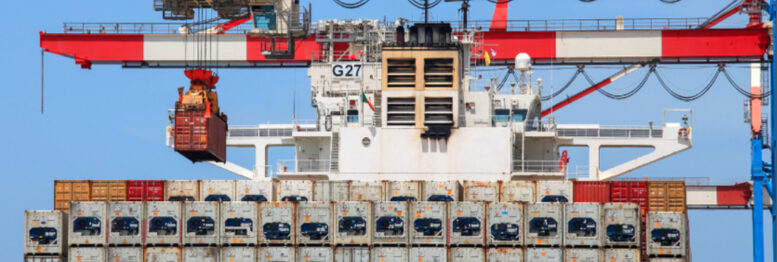Increasing Relevance of Reefers. Shipping lines continue to recognize the importance of trades involving fruit, frozen meats and other foodstuffs and are maximizing the reefer potential of vessels deployed on key shipping routes, such as the West Coast of South America (WCSA) or New Zealand.
It is now relatively common-place for container vessels to offer more than one third of capacity for reefer goods in some locations. Of the global operators, Mediterranean Shipping Co (MSC) and CMA-CGM have, for example, led the way in terms of increasing the number of reefer plugs offered, especially with vessels built since 2005. Additionally, specialist local operators such as Dole, have long recognized the added value of shipping by reefer containers instead of cargo moving loose and in bulk on reefer ships.
As part of a recent Maritime Advisory Project for a leading global terminal operating company, WSP assessed that volumes of banana exports in conventional vessels in one of the key exporting countries in the WCSA market had reduced by 50% over the past decade. Moving forward, it is projected that by 2040, all banana exports will be shipped via reefer containers and no use of general cargo reefer ships will remain. This is just one example, which applies to many different commodities that need reefer containers. However, it clearly confirms the future trends that are being catered for by both shipping lines, and port and terminal operators, who are offering market intelligence and research, which then leads to technical disciplines across maritime activities.
Yet the trend for greater capacity for reefer containers on ships is directly linked to key developments involving the vessels themselves, especially since the introduction of IMO 2020 by the IMO and future requirements for new fuel alternatives to keep pace with the drive for more environmentally friendly options. These new developments fully support the UN’s Sustainable Goals 13 (climate action) and 14 (life below water).
Transitioning Towards Green Seas. An assessment of the current ship order book offers some interesting trends. It is estimated that around 3.5% of the existing global fleet is using “alternative” fuels, but if the confirmed ships under construction are included the figure is increasing to 25-30% of the future fleet.
Of all the “green” shipping fuels available, liquefied natural gas (LNG) is the most popular option, followed by liquefied petroleum gas (LPG). Several other options are being developed, for example, 13 ships being built will use ethane-sourced power, 11 vessels should use methanol and an additional seven units will be fully powered by biofuel. As such, it is no surprise to see a growing interest in studying the potential for the supply of ammonia bunkering at the Port of Singapore to support (changing) future vessel requirements.
In addition, some new ships on order may also be oriented towards energy-saving technologies (ESTs). These will include things such as rigid sails, kites, exhaust gas economizers, bow enhancements, to name but a few.
While some of these examples do not appear on container vessels, they still point to growing momentum for these items, with different types of ESTs contributing to supporting shorter-term IMO requirements.
The trend towards greater use of alternative fuels is due to a combination of increased environmental pressures and the introduction of stricter emission regulations, most notably IMO 2020, the US rejoining the Paris Climate Accord and China’s carbo net zero target by 2060. IMO continues to drive the process, with a reduction of CO2 emissions by at least 40% across international shipping by 2040 and a 70% drop by 2050.
In the competitive context, for those regions that make extensive use of reefer containers, future access to export markets may depend on the ability to convert reefer vessel shipments into containers. In the WCSA trades, for example, access to reefer containers and to reefer plugs in ports and on ships is essential for shipping lines to maintain or increase their market share for this type of cargo, with approximately 1/3 of capacity for the relatively common reefer traffic on vessels in this region. For this reason, any shipping industry development, including the increased use of reefers in the above example, is one of several growing areas of support that the WSP Maritime Advisory team continues to offer to its clients in the ports and shipping industry.
Source: https://www.wsp.com/en-US/insights/setting-sail-for-more-efficient-and-greener-trade-by-sea
